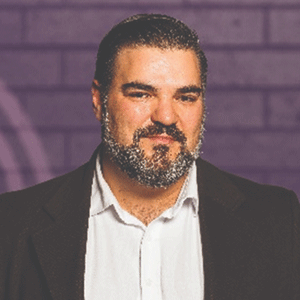THANK YOU FOR SUBSCRIBING

Increasing The ROI Of Technology In Education
James Garner Ptaszynski, Senior Director, World Wide Higher Education, Microsoft Corporation


James Garner Ptaszynski, Senior Director, World Wide Higher Education, Microsoft Corporation
With the calendar year winding down, Robin considers what her priorities should be for the coming New Year. It has been almost five years since she traded her teaching role for that of a CIO, and while she believes she has accomplished a great deal, her TO DO list always seems to be getting longer. The budget cuts of the last five years have subsided but it will be many years before her budget is back to where it was. In the meantime, the list of requests for additional capabilities continues to grow. She is constantly torn between using her resources to maintain existing core infrastructure versus providing new capabilities such as expanding wireless access, adding mobile capabilities, or support for such disruptive innovations as MOOCs.
I have been fortunate to have traveled to over 40 counties to visit educational institutions and to speak with hundreds of presidents, provosts, CIOs, teachers and faculty members. While there are some issues that are idiosyncratic to certain parts of the world, surprisingly, many are the same. There is consistent angst among CIOs to carefully balance the needs of their existing systems with the addition of new capabilities vociferously promoted by their community. I find that often lost in this cacophony are those systemic issues that, if addressed, would significantly improve the effectiveness of their institution’s IT spending and improve the satisfaction across a wide range of customers. One such issue is helping educators better integrate technology into instruction. While it has been over 30 years since the introduction of the PC into the classroom, aside from the use of PowerPoint and the increasingly reliance on learning management systems, most classrooms I visit are not too different from those that I taught in during the 1990’s or when I myself was a doctoral student in the 1980’s. According to the 2013 Campus Computing Survey, four fifths (79 percent) of CIOs surveyed report that “assisting faculty with instructional integration of information technology” is a very important institutional priority over the next two to three years. As a single data point, this is not all that damning, but the fact that this issue has been the top, or one of the top three, issues identified by university CIOs since 2000 indicates that there is much more work to be
As an example, I have seen dozens of failed 1:1 computing initiatives where faculty and students are supplied with devices. While having a device available to every student and every educator is a laudable goal, too often the initiative focuses on procuring the device as the end goal rather without looking at how to effectively integrate it into the learning experience. Further, it is rare to see attention to training faculty and students on how to achieve this goal. Too often, after the press releases and photographs of the bright and shiny new devices,educators are left to their own accord to figure out how best to use technology in instruction. The result is that the technology is not used very effectively as the day-to-day demands of instruction leave very little time for faculty to consider integrating it in a meaningful way. There may be a few faculties that do achieve integration but even these “islands of excellence” find little support for their new methods and eventually they a trophy. One university where I worked always set aside a percentage of the total cost of a new campus building for its ongoing maintenance and repairs. The facility planners correctly understood that even new buildings would eventually need something replaced and it was a lot easier to save for this eventuality along the way rather than to scramble and find the budget at the time it might be urgently needed. I would suggest that a similar approach should be taken for each major technology purchase. A significant percentage of the technology budget should be set aside for faculty development so that the full benefits of the technology can be realized. Given the significant demands on faculty members’ time, a particularly effective approach I have observed is a “Technology Enriched Instruction” (TEI) workshop for faculty. The one day workshop has five key components which together, create in faculty a greater awareness, appreciation, and aptitude in the appropriate integration of technology in instruction. The five components are: Familiar – Build on what they already know Authentic – Use examples and exercises from education Collaborative – Project-based work in five member teams Hands-on – Use technology to learn about technology Inquiry-based learning – Limited lecture Rather than the all-too-common “techno-centric” approach, which focuses on the technology itself, the TEI approach is based on the TPACK framework. TPACK is a model that emphasizes the appropriate combination of technology (T), pedagogy (PA) and content (CK). The workshop itself illustrates TPACK as faculty work through a series of developmental exercises that themselves display the right “fit” between technology, pedagogy, and content. The result is faculty who experience the use of technology as they learn how it can be appropriately applied to their own instruction. It is time we fully realized in education, like most other areas of the modern economy have, the systemic benefits of technology. Technology can help us to address some of the most pressing issues facing education today such as college completion, personalization, and preparing students for the new world of work. But to achieve this, CIOs must forge closer partnerships with academic affairs and focus more time and resources on helping faculty achieve true integration of technology in education.












